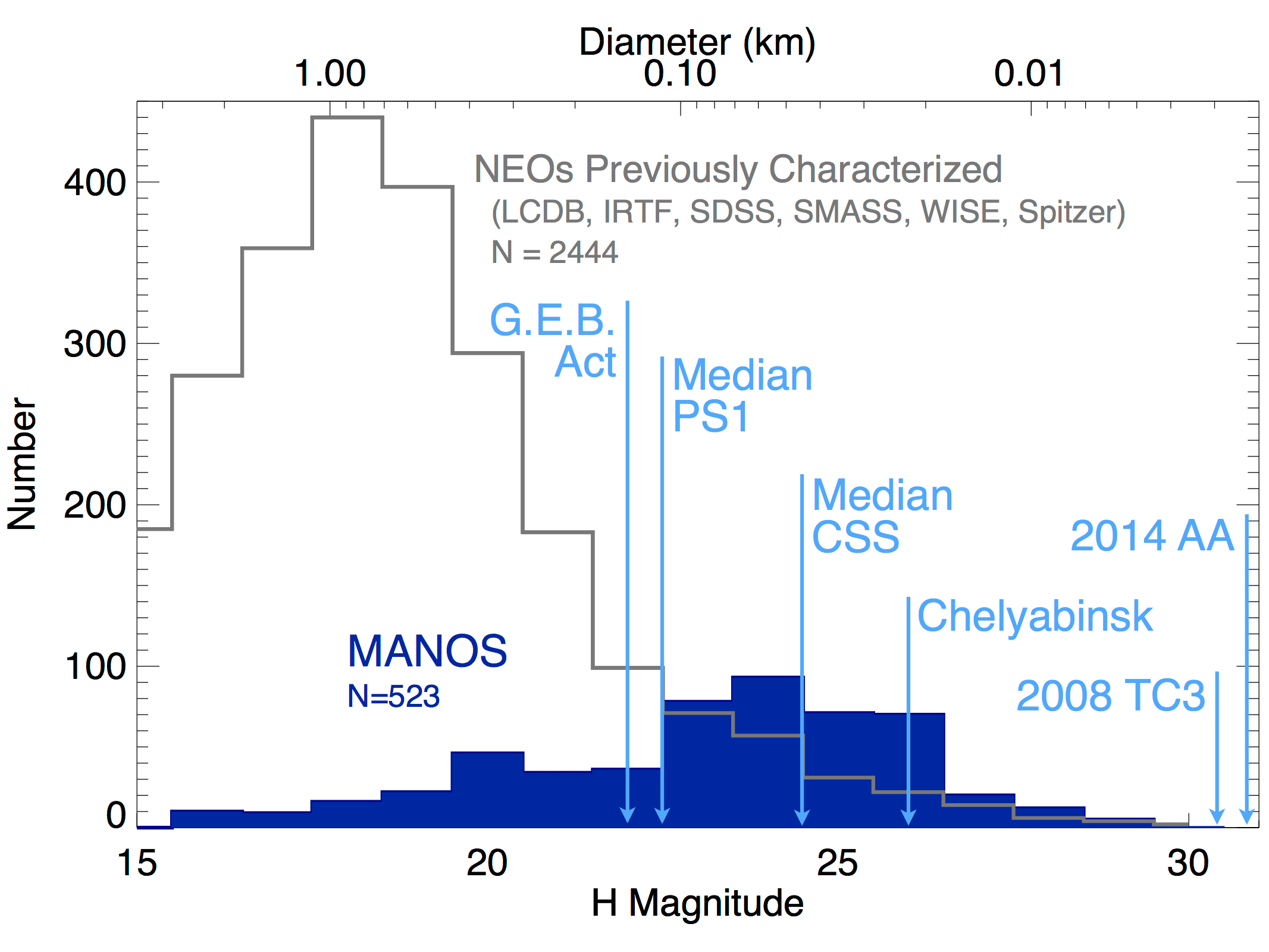What is MANOS?
The Mission Accessible Near-Earth Objects Survey (MANOS) began in August 2013 as a multi-year survey program awarded by NOAO. MANOS is a physical characterization survey of Near Earth Objects (NEOs) and will provide physical data, such as rotational properties and composition, for several hundred mission accessible NEOs across visible and near-infrared wavelengths.
One goal for MANOS is to collect data on the smallest, observationally accessible NEOs, which remain a poorly studied, but important part of the NEO population. These small (generally sub-km) NEOs far out-number their larger counterparts, pose the most immediate impact hazard, and are amongst the most accessible objects in the Solar System from the standpoint of spacecraft mission design.
Observationally accessing sub-km, mission accessible targets is enabled by a regular cadence of observations at large telescopes designed to characterize newly discovered NEOs before they fade beyond observational limits. The telescope facilities employed by MANOS include the 8-m Gemini North and South telescopes, the SOAR 4-m, the Kitt Peak Mayall 4-m, Lowell Observatory’s LDT 4-m, and the CTIO 1.3-m. Employing these assets and others MANOS will ultimately provide major advances in our scientific understanding of the NEO population, produce essential data for planetary exploration, and develop critical knowledge for impact risk assessment.



